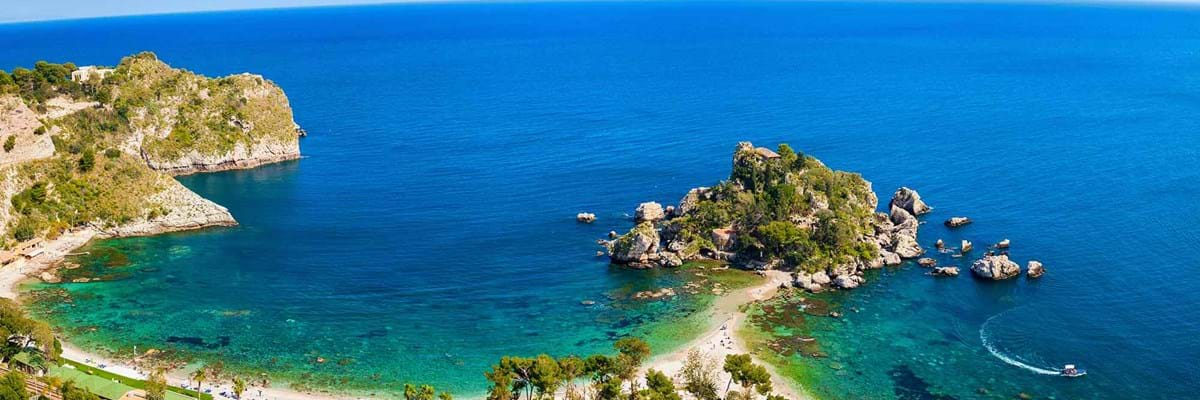Description
In the 20th century, the dramatic resort town Taormina was home to expatriate artists and writers including D.H. Lawrence. Marlene Dietrich, Truman Capote and Cary Grant were regular visitors and these days the A-listers arrive for the annual film festival in June. Taormina is a perched 800ft above the Ionian Sea, and there are dozens of bars, restaurants and chic boutiques in Corso Umberto, the pedestrianised main thoroughfare. It is also easy to get to the beaches by taking a three-minute by cable car. The town’s ancient Greek theatre was built in 3BC and summer visitors can enjoy opera, ballet and music in this impressive amphitheatre - although views over the sea and snow-capped Mount Etna provide their own drama.
Destination Profile
Sicily is an island that represents three continents in its history, cuisine, language and even the citizens themselves. Their characters are as varied as their ancestry.
Throughout the years the island is a host to numerous cultural, artistic and religious events. Just like the Greeks, Easter and Christmas are celebrated with much gusto. Every town or village has a patron saint and commemorates their name day with fireworks, eating and drinking. The culture here is one that must be experienced as it is so unique and memorable.
Opera and classical music are also popular in Sicily, with Palermo boasting the biggest opera house in Italy, Teatro Massimo. The superb Taormina Greek Theatre, offers as backdrop of Mount Etna, and has an impressive summer schedule every year, which includes concerts and operas featuring international artists. Popular artists, such as James Blunt, have appeared here in recent years.
For those who adore art, there are many excellent art galleries around the island. The most noteworthy found in Palermo, the Galleria Regionale della Sicilia, the Galleria d'Arte Moderna and the new Museo Regionale d'Arte Moderna e Contemporanea della Sicilia.
Things To See
Taormina has plenty of attractions, but by far the most impressive is the old Teatro Greco (which is more Roman than Greek in appearance owing to a Roman first-century redesign). The views from there are absolutely magnificent - with the sea and the beautiful coastline on the left of the horizon and Mount Etna, with its still active volcano, towering up in the landscape to the right. The amphitheatre is also the site of an international film festival and several theatre productions every summer. Other things worth seeing include the Palazzo Corvaja, a building of Arabic origin which today houses the tourist office and a museum of local folklore; an impressive 12th-century clock-tower on Piazza IX Aprile; and the public gardens, which were created by Florence Trevelyan, a Scottish woman who settled in Taormina in 1899.



